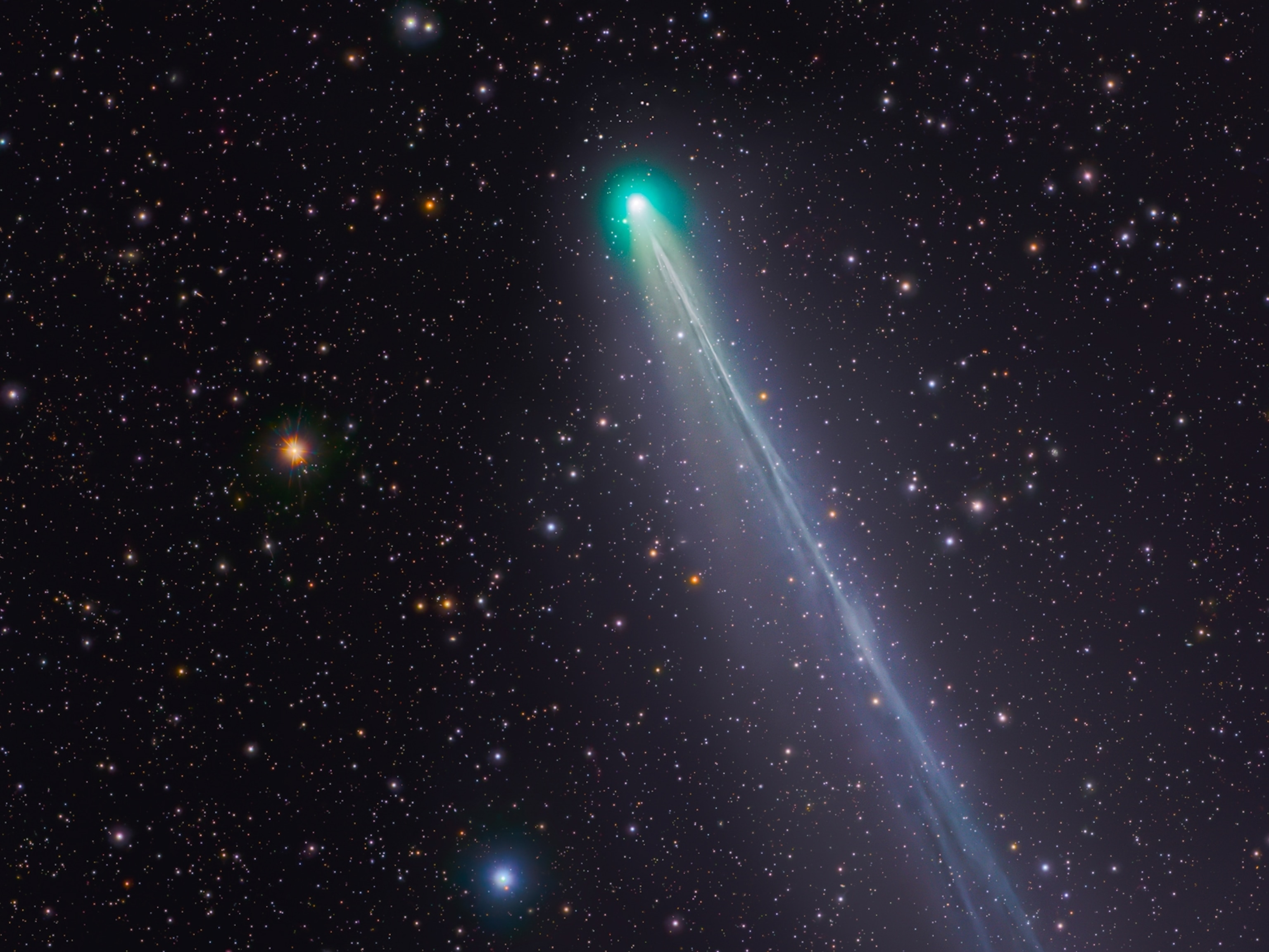
Why Comet 67P Looks Like a Rubber Ducky
The cosmic visitor owes its bizarre shape to a collision that welded two smaller objects together 4.6 billion years ago.
In the year and change since the European Space Agency’s Rosetta mission became the first spacecraft to orbit a comet, the probe has made all sorts of discoveries about the object known as Comet 67P/Churyumov-Gerasimenko—for instance, that it’s bumpy, not smooth as expected, and is covered in dark, carbon-rich compounds with surprisingly little ice.
What scientists haven’t been able to figure out is how the comet got its strange, rubber-duck-like appearance. It has two bulbous lobes—a larger “body” about two miles across, and a smaller “head,” about a mile in diameter. Was it originally a single lump that was carved into its present shape by erosion, or did it form when two smaller comets banged together and remained stuck.
Finally, a paper published online Monday in Nature appears to have the answer: The mighty space duck is the offspring of two colliding objects.
Initially, says lead author Matteo Massironi, of the University of Padova, in Italy, astronomers saw a lot of material spewing from the “neck” of the comet, suggesting that prolific erosion from this region created 67/P’s peculiar shape. “But soon we saw activity everywhere, so it turns out there is no excess [erosion] in the neck with respect to other parts of the comet.”
What ultimately convinced Massironi and his co-authors that 67P had originally been two independent bodies was a careful analysis of what the scientists call “terraces”—distinct layers of the comet’s interior exposed by the partial stripping of outer layers over 67P’s 4.6-billion-year lifetime. Both the head and the body of the comet show evidence of such layers, which can also be seen in the walls of deep, sinkhole-like pits Rosetta found last winter.
If those layers were oriented in the same direction—like those of a single onion that had been sculpted to look like a rubber duck—it would be strong evidence for the erosion theory. But, a discrepancy in the layers would suggest that the two sections of the comet had led separate lives before joining together.
It wasn’t possible to judge the orientations by sight alone, however. So, the scientists used Rosetta’s images to create a computer model of 67P’s layers, virtually stitching the patches of exposed terracing to visualize how they connected under the surface. They used software Massironi developed to help map a route for the Brenner Basis Tunnel under the Alps, which will ultimately be the world’s longest railroad tunnel.
The computer model confirmed the scientists’ suspicions. Both parts of the comet have similar layering. However, the layers are oriented so that they surround the cores of each lobe, not the core of what would have been a single original body.
A high-velocity collision between two smaller objects would have smashed them both, so the scientists conclude the decisive event must have been something less violent—a celestial fender-bender that occurred during the early stages of the Solar System.





